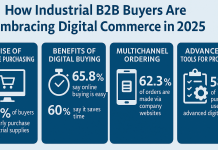Supply networks were crippled only two years ago, despite the fact that it can feel like a long time ago.
And the outcome of that deadlock literally depended on it. Pharmaceutical firms rushed to develop vaccines, produce them, and make sure that essential drugs (and in certain cases, medical supplies, etc.) got to the healthcare professionals, patients, and families who needed them.
According to Sarfraz Nawaz, head of digital transformation and supply chain at Johnson & Johnson, some lessons still apply even if some of the most important moments of the global healthcare crisis may have (hopefully) faded into the not-so-distant past. Supply chains in particular need to be modernized.
Rising pricing, unclear geopolitical events, and even the challenge of guaranteeing that smaller suppliers can continue operating as normal are all symptoms of the current uncertainty.
He said that the resolution of supply chain issues might be “bigly affected” by embedded finance.
He emphasized that the best methods for navigating and addressing the inflation and inventory problem right now are finance and embedded payments. If we want to get there, embedded finance must now be a strategic tool rather than merely a back-office consideration.
He claims that Johnson & Johnson has been utilizing its infrastructure lately to offer payment and decision layers that automate operations from procurement to extending credit to vendors. The effect on treasurers and chief financial officers has been positive (CFOs).
Stakeholders, according to him, “get from contextual, seamless experiences and platforms that open up new use cases and improve financial access.” Businesses like J&J benefit from the use of data science to measure goals and benchmarks and assess how to present assets are being used.












